Getting started with Japanese
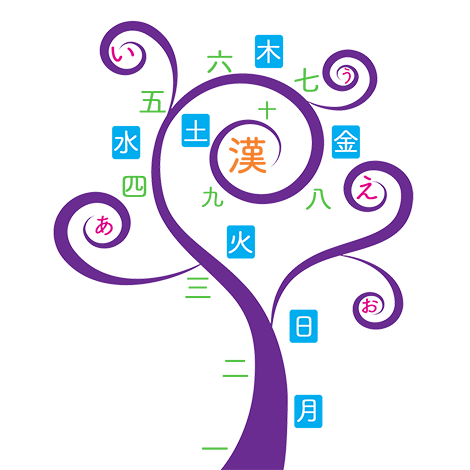
Getting started learning Japanese with Kanshudo
Kanshudo's 20 Beginner Lessons are designed to help you get started successfully with Japanese. This guide will help you take your very first steps, and provides an overview of how the lessons are structured.
Visit your Lesson Index any time to see your lesson
status and take a lesson.
For a comprehensive overview of all Kanshudo's features and functions and how they work together, see our guide How to use Kanshudo.
Contents
This introduction and the Kanshudo Beginner Lessons are designed to help you take
your first steps with Japanese. If you do not yet know what hiragana, katakana or kanji are,
study this introduction before taking your first lesson.
If you already know the hiragana, and you understand what kanji are, you are ready to start
the lesson series. Skip to section 4 on using the lessons effectively, then dig in and take your first lesson!
Although you could in theory speak Japanese without knowing any hiragana, katakana
or kanji,
to read or write you will need some level of knowledge of all three. Practically, to function in Japan, or to
read
Japanese books or newspapers, or to communicate with Japanese people, mastering the written language is as
important
as learning to speak. Let's start with an overview of how written Japanese works.
Two alphabets: hiragana and katakana
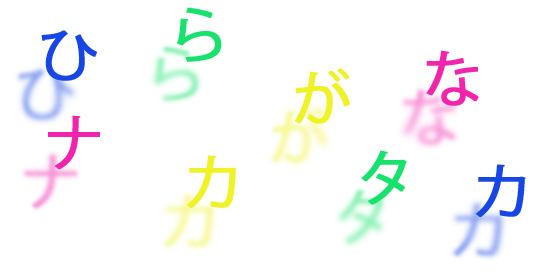
Japanese uses two phonetic alphabets, the hiragana and katakana. Each of these alphabets
contains
about 50 symbols that represent the same 50 sounds, and each time you see a symbol, you can be sure it will be
pronounced
the same way. (This is an advantage of Japanese over English, where many letters may be pronounced in several
different
ways depending on context.) Some of the symbols can be combined and modified for a total of about 80 sounds.
And that's it!
Once you can reproduce those 80 sounds, you can correctly sound out any Japanese word.
Just like the English alphabet, any Japanese word can be 'spelled' using either alphabet.
The only difference is that since Japanese has two alphabets, by custom,
katakana is used to spell out words of 'foreign'
origin,
and hiragana is used for everything else.
Your first step with Japanese: hiragana
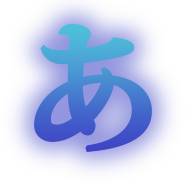
For a beginner, learning the hiragana is the most
important first step you need to take. Although you can start the Beginner Lessons without knowing hiragana
(since the first few lessons include 'romaji' - see the note below),
you will not get the full benefit unless you learn hiragana. All the games and learning exercises, as
well as the flashcards, require knowledge of hiragana.
So, if you do not yet know the hiragana, stop here and read our
Introduction to the hiragana. Use the flashcards feature to create
hiragana flashcards, and start learning them. With concentrated effort you should be able to master the hiragana
in one to two weeks. You will have taken your first big step towards mastering Japanese! Note: you can
either wait till you have finished learning the hiragana before starting the lessons, or you can get started in
parallel.
However, we don't recommend you study more than a few beginner lessons until you know most of the hiragana.
Soon (but not first): katakana
If you know hiragana but not katakana, we recommend you learn katakana soon. However, it's not
necessary before starting the lessons. When you are ready, head over to
Introduction to the katakana.
Writing Japanese with the English alphabet: romaji
Romaji
There are several systems of writing Japanese with the English alphabet for non-readers
of Japanese characters. The one used by Kanshudo is what we consider to be the most accurate and easy to
understand - it is called 'Modified Hepburn'. The Hepburn style is the most common way to romanize Japanese,
and it is easy to understand. For the most part, it is very literal - for
example し becomes 'shi', あ becomes 'a' etc. Modified Hepburn improves on the original Hepburn by using the
more
easily-understood 'ō' for おう (instead of 'ou'), and 'o' for を (instead of 'wo'). Read more about
Hepburn romanization ⇗
on
Wikipedia.
The kanji
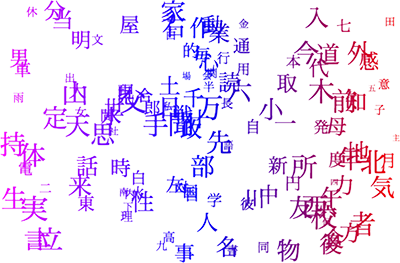
The Japanese kanji form the bulk of the characters used in Japanese writing.
Originally
imported
from China, there are thousands of kanji, each with a distinct meaning. The Japanese government defines a set
of
2136 characters, known as the Jōyō kanji or 'kanji in daily use'. Once you know these, you will be able to
read
the
bulk of Japanese writing.
However, in fact it's much easier than that. The first 100 kanji you will learn in the
Beginner
Lessons are the most frequently used, and just like the letters 'e' and 't' in English, they occur many times
more frequently than the rarer characters. As a result, once you have completed the Kanshudo Beginner Lessons,
you will encounter kanji you know all the time, and you will be able to grasp the meaning of the Japanese you
encounter in many situations (even if you don't know some of the characters).
In addition, the kanji chosen for the Beginner Lessons correspond with the kanji you
need to
know for the first level (N5) of
the JLPT, the Japanese Language Proficiency Test ⇗
. This is the standard test
any serious student of Japanese takes, and is required for entry to Japanese university, or for government
scholarships, as well as by some employers.
When you have completed the Beginner Lessons, you will be ready to take the N5.

When you are interested in learning more about kanji, read our
kanji overview.
Components and mnemonics
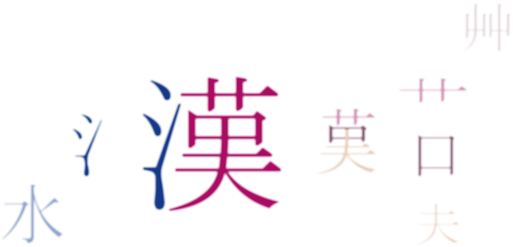
One of the key steps in learning kanji is realizing that almost all kanji are
composed of one or more 'components'.
Common components may be reused in hundreds of kanji. Once you know the most common
components, it becomes easy to learn new kanji by thinking of them as combinations of components you already know.
Kanshudo uses this technique extensively to help you learn kanji. Each kanji includes a
'mnemonic' - a simple sentence which links the meaning of the kanji you are learning with its components.
In the Beginner Lessons, we introduce you to the concept of mnemonics, and we include some
very common components that are worth learning alongside the most common kanji.
To learn more about these concepts, read about
the Kanshudo System
and about components.
Grammar and vocabulary
The Beginner Lessons introduce you to about 200 beginner level words, as well as about 50
basic grammatical concepts. Both vocabulary and grammar are carefully chosen to be at the level included in the
JLPT N5 exam (see above).
The introductory slideshow
The slideshow contains the instructional part of the lesson. In this section, you are introduced to the
five kanji in each lesson, along with the key readings for each.
Readings
Each kanji is presented with its key meaning and one or more readings. Almost all kanji have
at least two readings, and some have ten or more. However, in the Beginner Lessons, we only present the most
important readings for early learners.
On / kun readings
As you learn more Japanese, the distinction between 'on' (音) readings and 'kun' (訓) readings
of kanji will become important. In general, on readings are used when a kanji is met in a word with other
kanji, and
kun readings are used when the kanji is combined with hiragana. In general in dictionaries
(and elsewhere in Kanshudo), on readings are given in katakana, and kun readings in hiragana.
However, as a beginner, this distinction is not too important, and just creates additional frustration. So in
the
Beginner Lessons, we have presented all readings in hiragana. If you would like to see an illustration of
this,
compare the full Kanshudo entry for 人 (person) with the way it
is presented in Beginner Lesson 1.
'Irregular' readings
In some cases, where a word that uses a kanji is important for a beginner, but the word
uses an irregular reading of the kanji, or the word uses a reading you would not encounter as a beginner
except in that
particular word, we include the word in the kanji introduction. For example, when we present 人, we present the
'reading'
ひとり (一人, one person). This is an irregular reading of 人, but an extremely common word, so it is best to learn
this
'reading' by learning the word.
Example sentences
Each reading is introduced using one or more example sentences.
| わたし は にほん人 です 。
Listen
|
||||
| わたし | は | にほん人 | です | 。 |
| わたし | は | にほんじん | です | 。 |
| I | (topic marker) | Japanese (person) | is, am, are | . |
| I am Japanese. | ||||
Each sentence is presented on either five or six lines: the Japanese, the Japanese
separated into words, the reading of each word in hiragana, (in early lessons only) the reading in romaji,
the English meaning of each word, and finally a natural English translation of the whole sentence.
Grammar points
Many readings are accompanied by 'grammar points' - short notes introducing critical grammatical
constructions.
Grammar points will often also include an example sentence.
GRAMMAR POINT
X は Y です - X is Y
X は Y です。
meansX is Y.
One of the most common patterns in Japanese is "X is Y". 「は」is the topic marker, placed immediately after the topic of the sentence.「です」is the polite form of the verb 'to be'. In English です can mean 'is', 'am' or 'are'.
|
あれ は テーブル です 。
Listen
|
||||
| あれ | は | テーブル | です | 。 |
| That | (topic marker) | a table | is | . |
| That is a table. | ||||
|
すずき さん は いい 人 です 。
Listen
|
||||||
| すずき | さん | は | いい | 人 | です | 。 |
| すずき | さん | は | いい | ひと | です | 。 |
| Suzuki | Ms | (topic marker) | a nice | person | is | . |
| Ms Suzuki is a nice person. | ||||||
|
父 は 元気 です 。
Listen
|
||||
| 父 | は | 元気 | です | 。 |
| ちち | は | げんき | です | 。 |
| My father | (topic marker) | in good health | is | . |
| My father is in good health. | ||||
|
私 の 誕生日 は 3月 22日 です 。
Listen
|
|||||||
| 私 | の | 誕生日 | は | 3月 | 22日 | です | 。 |
| わたし | の | たんじょうび | は | 3がつ | 22にち | です | 。 |
| I | (possessive marker) | birthday | (topic marker) | March | 22nd | is | . |
| My birthday is on March 22. | |||||||
|
今年 の 秋 は 寒い です 。
Listen
|
||||||
| 今年 | の | 秋 | は | 寒い | です | 。 |
| ことし | の | あき | は | さむい | です | 。 |
| this year | (possessive marker) | autumn | (topic marker) | cold | is | . |
| This year's autumn is cold. | ||||||
Drawing practice
Once you've read the lesson content, the next step is to practice drawing each
kanji at least three times. Studies show that practicing writing kanji can increase your retention rate
by four times
compared to reading alone.
Select any kanji to begin, and just touch (if you're on a tablet or phone) or use your
mouse to draw over the gray lines. Draw each stroke in sequence, beginning at the end with the number.
The sequence may seem arbitrary at first, but it actually follows a few simple rules, and
makes both drawing and remembering the kanji easier.
If you want to see how the kanji is drawn, go back to the Slideshow
and click 'Animate' next to the kanji.
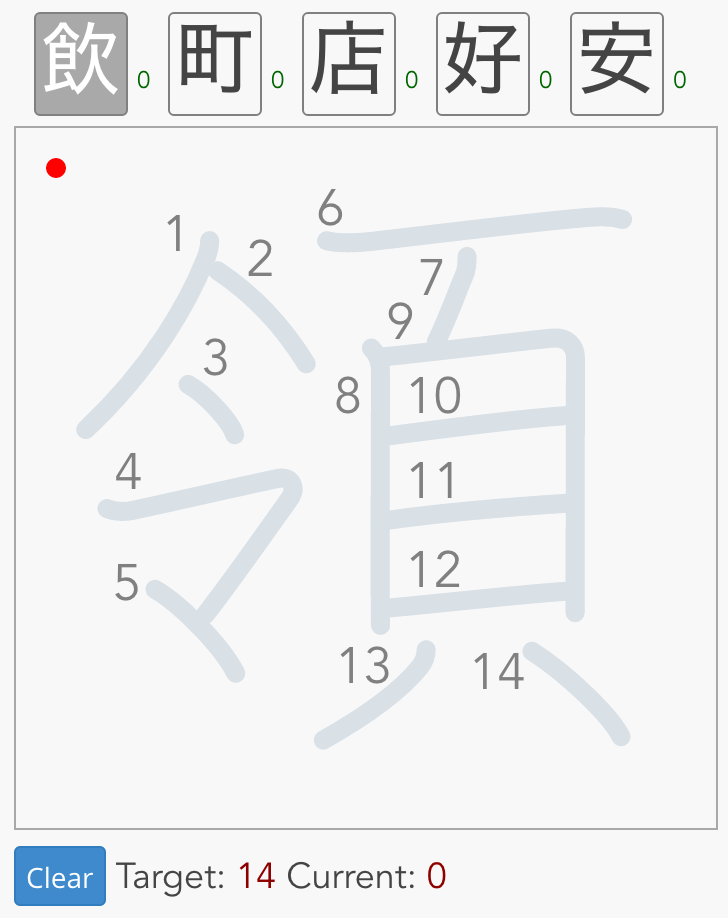
Kanshudo will keep track of the strokes you draw, and when you reach the target the counter
next to each kanji will be incremented. You need to get each of the five kanji to 3 to complete the exercise.
Note: status is not stored, so complete the drawing exercise in one go!
When you've
completed a kanji, or if you make a mistake, just click the Clear button
(or select the kanji again) to empty the display.
Learning games
Each lesson comes with five phenomenal learning games, which are both great fun and
very effective at helping
you retain the kanji and vocab. Play your favorites, and try to play them all!





Kanji Match
Drag each kanji over its corresponding meaning. Kanji shown
are from the current lesson and
all previous lessons. Match each kanji from the current lesson at least once to win.
Reading Match
Select the reading for the kanji or word surrounded by the gray square.
Complete each sentence in the lesson to win.
Sentence Builder
Drag words in order to build the Japanese sentence matching the
English provided. Complete each sentence in the lesson to win.
Word Match
Drag each word over its corresponding meaning. Match each word from the
current lesson at least once to win.
Sentence Complete
Drag kanji into the blanks in the sentence. Complete each sentence in the
current lesson to win.
Flashcards
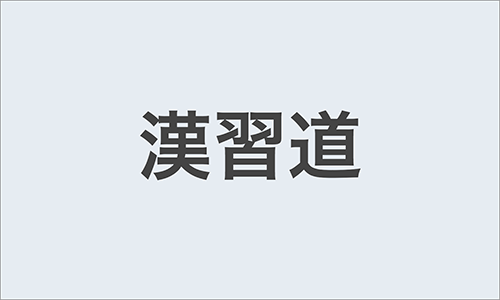
Kanshudo provides a built-in flashcard system which works well on both mobile devices
and
full-sized screens. Kanshudo flashcards use the spaced repetition algorithm used in Anki. For more information
on
flashcards,
read How to use spaced repetition flashcards to study Japanese
. Flashcards are optional - they're not required to complete lessons. However, we highly recommend you create
cards for each lesson and use them for study and practice.
Lesson status and completing a lesson
Lesson status is tracked automatically by the system. Each time you complete a slideshow,
you earn 20%. The drawing practice earns you another 20%. You then earn a further 20% for the first three games
you
complete. Once you hit 100%, the lesson is completed. You can continue to play the games, and to use any
other features of each lesson, even once it's completed.
Play the games!
Kanshudo's Beginner Lessons are designed to be fun and engaging. Many scientific studies have found
that games help you learn faster - both by keeping up your motivation, and by introducing words and concepts
to you in different ways. So play the games! Play them as often as you can. When you have a spare five minutes,
play a game for a current or recent lesson.
Don't get discouraged
Learning a language takes time. If you are over 5 years old (!),
you have probably already heard many times that it is much harder for adults to learn languages.
In fact, this is misleading. As adults, we expect to be able to take on new challenges very quickly. As a child,
it took you 10-15 years to master your native language! You can learn Japanese much faster than that if you are
willing to work at it. So don't be discouraged if you feel you are not making progress. Steady progress
is invisible at first, but gradually adds up to mastery!
Complete levels before moving on
As much as possible, try to complete a lesson before you move to the next. This will help you
with motivation, since you will feel you are accomplishing something, but it will also help to ensure you master
the concepts before moving on to the next topic.
Get help and support
If you are stuck, or need any help, reach out to us. Our goal
is to help you learn Japanese as quickly and effectively as possible, and we will try to support you however we
can.
Kanshudo is designed to help you master written Japanese and the kanji, and we have tools, lessons,
games and many other benefits that can help you at all levels.
Plus, every activity on Kanshudo
earns you Study Points , which
count
towards free
Pro access! The
Kanji Wheel and your personalized Kanji Mastery Score
tracks your progress
from the day you start using Kanshudo, and provides intelligent study recommendations.
Once you've completed the Beginner Lessons, it would be a great idea to refresh your memory
by doing a Challenge for each of the kanji covered. The Kanshudo Challenge is the most
effective way we have found for learning a specific kanji - to read more about Kanshudo Challenge, see our
detailed how to guide.
Your next step will probably be to take
our more advanced lesson series, the 53 Stages of the Kanshudo. You'll also
want to take the Quiz regularly to check your progress. For more tips on putting
in place an effective study program, read our step-by-step
guide, How to master the kanji.
And of course you can
use Kanshudo to search - start with Quick search, or if you are interested in
specific
results,
use Kanji search, Word search
or Example search. It would be a great idea to work steadily through our
Grammar reference library.
Kanshudo is your AI Japanese tutor, and your constant companion on the road to mastery of the Japanese language.
To get started learning Japanese, just follow the study recommendations on your Dashboard.
You can use Quick search (accessible using the icon at the top of every page) to look up any Japanese word, kanji or grammar point, as well as to find anything on Kanshudo quickly.
For an overview, take the tour.
